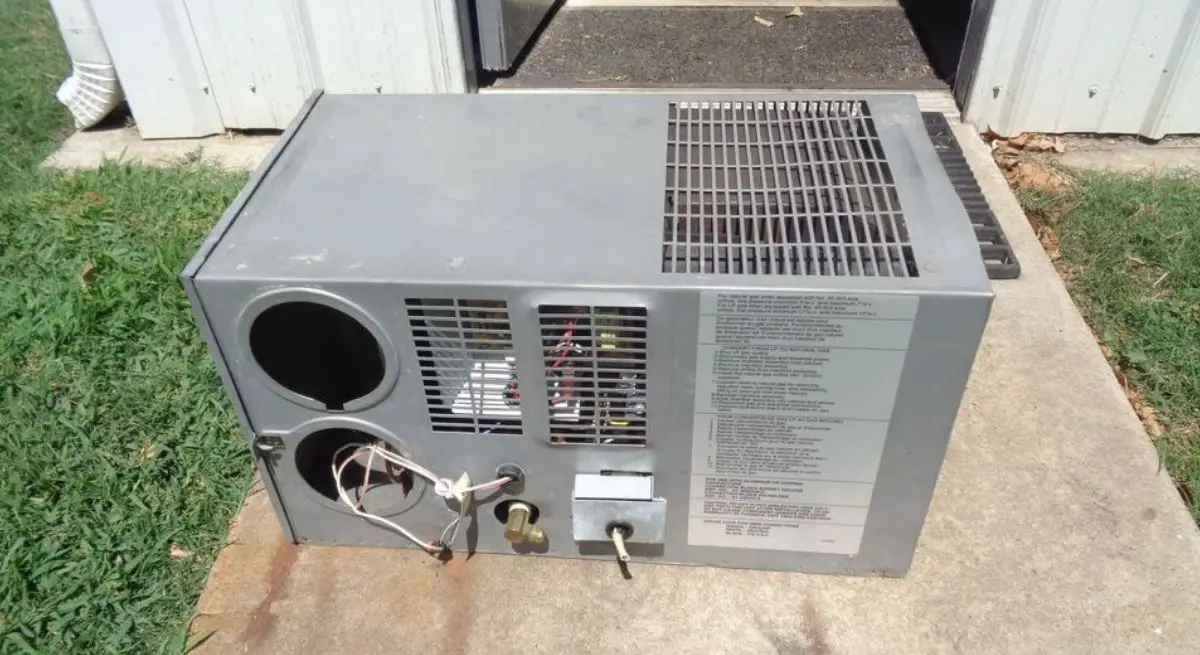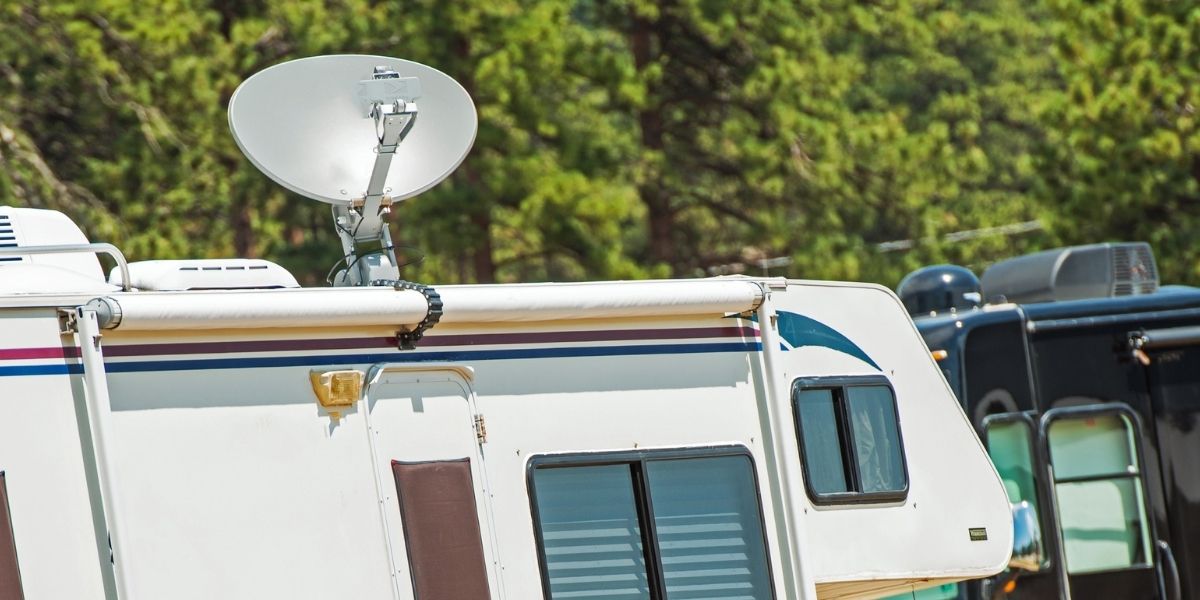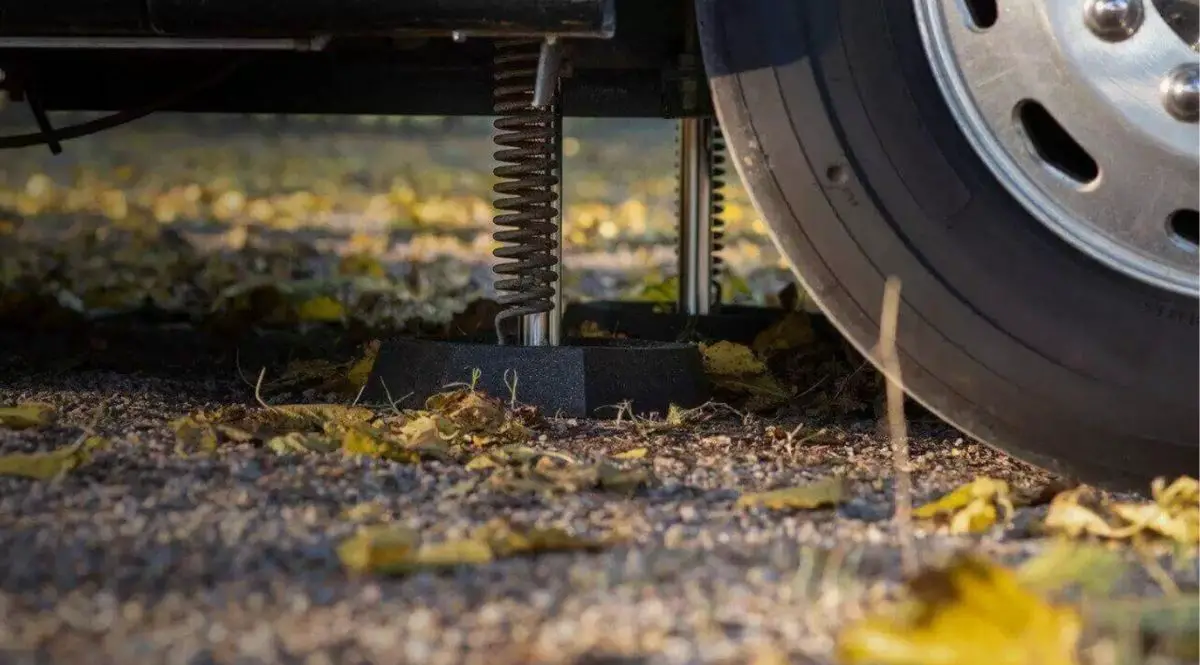Why Does My RV Furnace Keep Blowing Fuses?
A blown fuse in any circuit is the result of too much current passing through the lines. There are several items in a furnace that can have issues that will cause too much current to be drawn. Let’s take a look at some of those things.
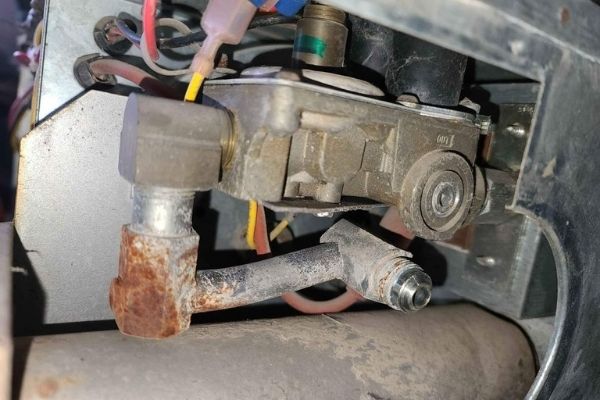
- Wiring issues. Shorts in the wiring between the thermostat and the furnace can cause the furnace fuse to blow when it switches on. Shorts can be caused by rodents in your walls, or the chaffing of wiring on sharp edges while the rv flexes as you travel. The wires between the fuse block and the thermostat are constantly hot, if the fuse blows as soon as you replace it with the thermostat off then look for wiring issues between the fuse and thermostat. If the fuse blows only after the thermostat activates the furnace, then the issue is between the thermostat and the furnace.
- A nest built up in the blower fan. Mud daubers or rodents can build nests in the furnace blower fan. These nests can prevent the fan from turning which will blow your fuse. Check the fan and clear any debris preventing it from turning freely.
- Failed Blower Motor. A blower motor with a failed bearing or short in the windings will cause the furnace fuse to blow. If the blower fan is free of debris, but it still does not turn freely then replace the motor and test the furnace.
- A short within the furnace. If the motor and fan check out ok then look through the furnace for any shorts. This can be a short in the wiring where the wire insulation has rubbed off, allowing it to make contact with another wire or the frame of the furnace. It could also be a short within any of the circuit boards in the unit. Shorts on circuit boards usually appear as brown or white burn marks on the board.
- Bad Thermostat. While unlikely, a short in the thermostat itself can lead to blown fuses. If everything else checks out, check your thermostat.
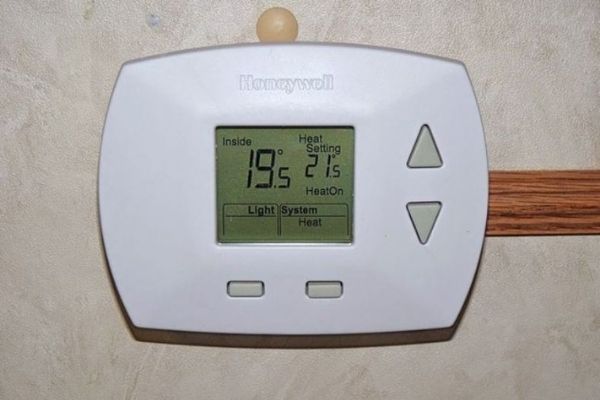
Why Does My AC Come On With My Furnace In My RV
Having the AC come on with the furnace is a common issue in many RVs. By far the most common cause is improper settings in your thermostat. If you are using a digital thermostat that controls both the furnace and the AC then make sure the fan is set to “Auto”.
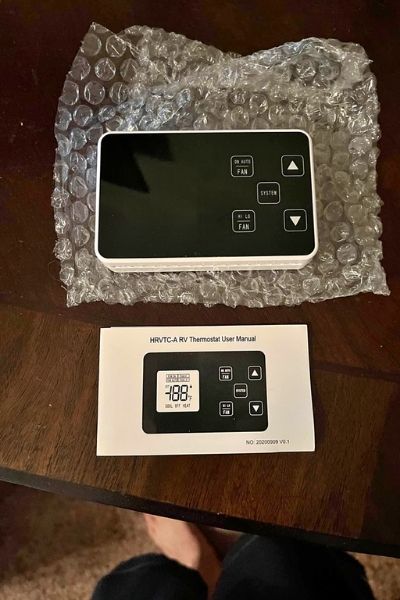
Why Does My RV Furnace Sound Like A Jet Engine
RVs are constructed with thin walls and most RV furnaces are separated from the living area by just one of those walls. To make matters worse, the furnace usually draws air through an open, unfiltered grate that opens to the living space. This allows even more noise to escape into the RV’s interior.
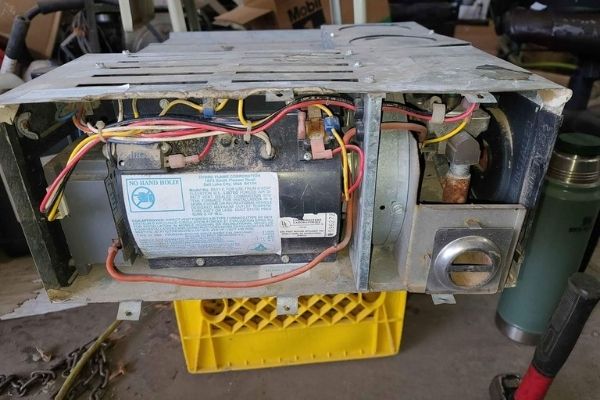
When an RV furnace runs you will usually hear four sounds. The first is the exhaust fan running. This fan draws air from the outside and cycles it through the combustion chamber and back out the exterior vent. This is the fan that keeps toxic gases like carbon monoxide from getting into the RV.
The second sound is the clicking of the pilot igniter. The third sound is the main burner igniting. That burner produces an intense flame that can sound like a jet engine. Once the system detects proper ignition then the circulation fan will turn on to force hot air throughout the RV.
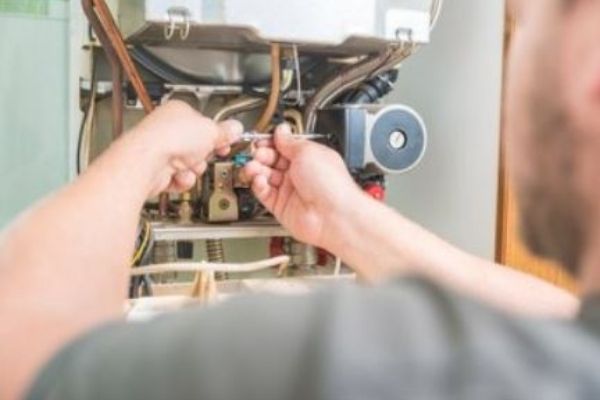
This can be a loud fan as well. All of these things combined can sound like a jet engine running in your RV and is not necessarily indicative of a problem. Gas leaks from lines, valves, or the heat exchanger can cause an excessive jet engine-like sound. Gas leaks of this type can be extremely dangerous so it is important that they be addressed immediately.
Because RV furnaces can be louder than typical residential furnaces it is important that you learn what your furnace should sound like. Any excessive or extreme sounds beyond that should be investigated by a trained professional.
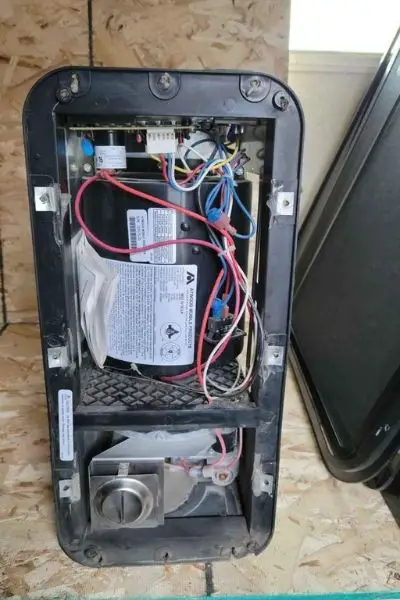
RV Furnace Only Getting Warm?
Poor RV furnace heating performance can be caused by several factors. RV furnaces are only capable of generating a relatively small amount of heat when compared to a residential furnace. This means that when air passes over the heat exchanger, the temperature of the air is not raised significantly.
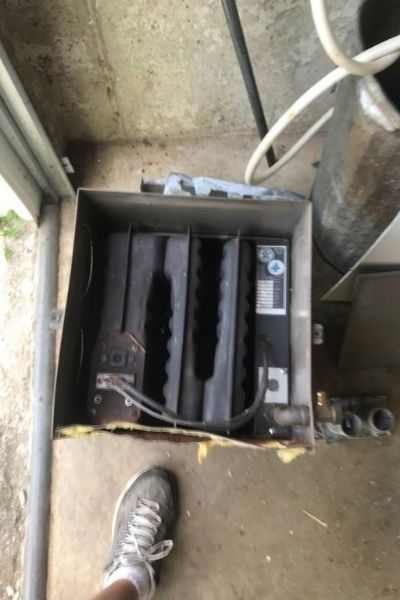
If the inside temperature is low, then the heat coming from the vents will also be below. If you are just turning the furnace on for the first time in a cold RV, expect it to take some time to warm things up. RVs are also poorly insulated and the ducting for the furnace is often exposed to non-insulated outside surfaces.
That means the colder it is outside, the more heat will be lost in the ducting as your furnace’s heated air moves through the RV. The further the vent is from the furnace, the cooler the air will be coming out of that vent. This is a normal operation for an RV furnace system.
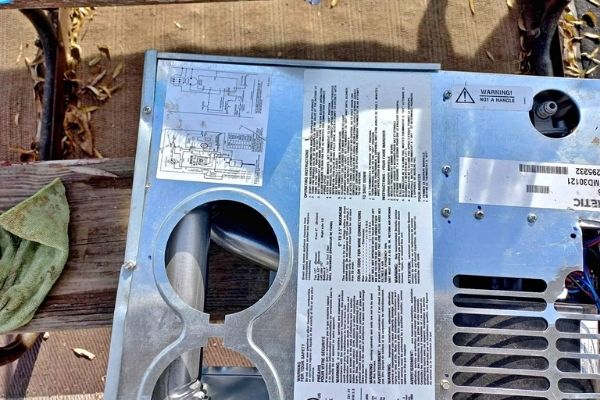
The easiest way to improve furnace performance in extreme cold conditions is to isolate the space under the RV from the surrounding outside space with an RV skirt. This will protect the undercarriage of the RV where most furnace ductwork runs from the coldest surrounding temperatures.
Poor furnace performance can also be caused by mechanical issues. Proper furnace maintenance is crucial to get the most out of your unit. Clogged heat exchangers, dirty fans, plugged-up gas valves, faulty propane regulators, excessively cold propane tanks, dirty or clogged ductwork and even running the stove while running the furnace can cause less than optimal flame in the furnace or poor heat distribution in the RV. If you are experiencing poor furnace performance then go over the entire system to make sure everything is working as it should.
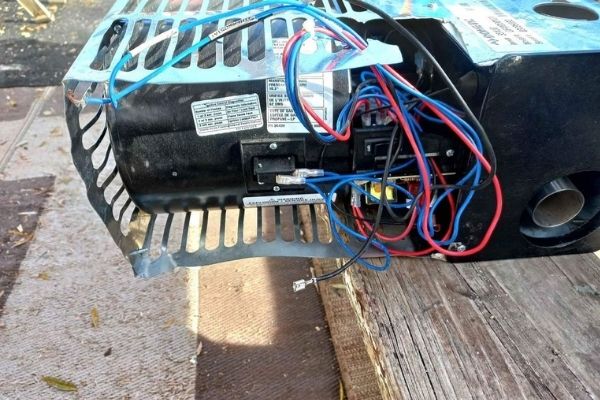
RV Furnace Keeps Cycling On And Off Repeatedly
An RV furnace cycling on and off repeatedly can have several causes. Most modern RV furnaces will have a feature where they will try to start up to 3 times before falling off. Any issue that prevents the furnace from reaching full running mode will trigger this cycle. So, a failed blower motor, sail switch, gas valve, flame sensors, etc. will all trigger this cycling behavior.
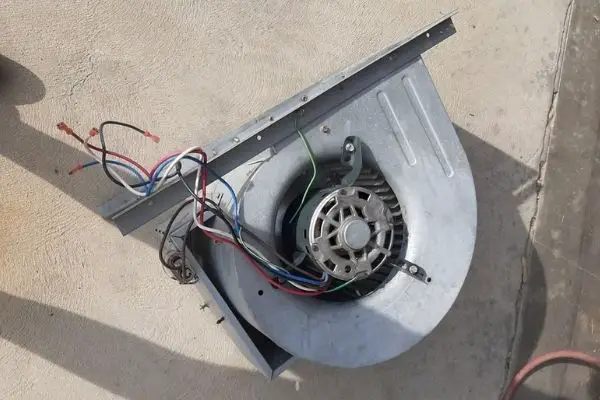
Even poor gas flow from your tanks to the furnace caused by faulty regulators, low temperatures, gas leaks or simultaneously running gas appliances can trigger this behavior. If you are experiencing this type of cycling then you’ll need to troubleshoot the furnace and/or gas system to locate the issue that is causing the failure to run.
Repeated cycling on and off can also be caused by control board issues in the furnace or a faulty thermostat. To test the thermostat, bypass it by jumping the hot and furnace trigger leads together. The furnace should start immediately, if the cycling problem persists then the issue is not in the thermostat.
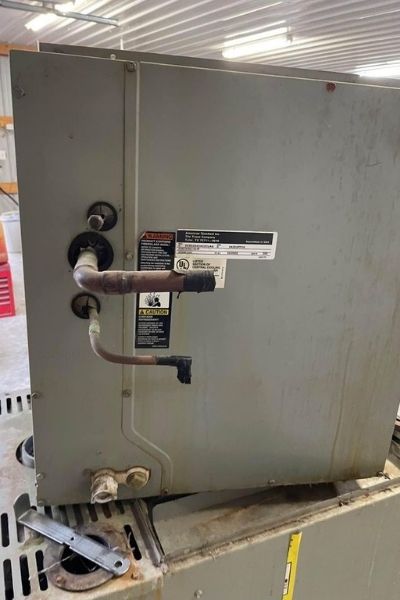
Finally, make sure your thermostat is not obstructed by anything that would allow it to heat or cool faster than the rest of the RV. If a nearby door opens to cover the thermostat and a floor vent blows up between them then the thermostat will heat quickly with the furnace on, causing it to turn the furnace off. It will then cool quickly, causing it to cycle the furnace right back on. Always make sure the thermostat is not obstructed by anything that can create these microclimates.
There Is No Power To My RV Furnace?
If there is no power reaching your RV furnace then check where the power should be coming from. Most RV furnaces are 12V DC so the power will come from a fused circuit in your power center. Some RVs have AC-powered furnaces and those will run from a breaker in the power center.
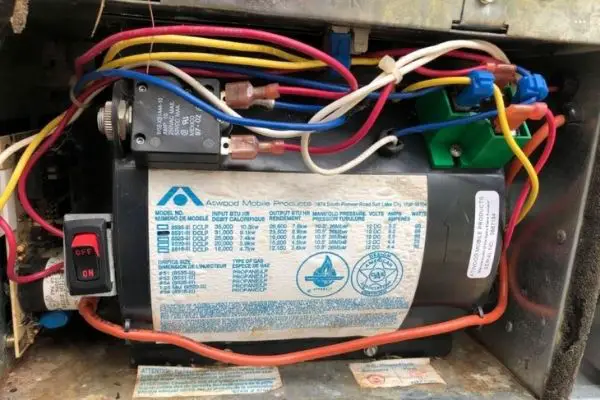
Check your fuse/breaker for your furnace circuit. If it is blown or tripped then replace or reset it. If the fuse or breaker is fine then move on to the thermostat. Make sure the thermostat is set and functioning correctly. Most modern RVs have dual control thermostats that operate both the furnace and the central AC. The thermostat should be receiving constant power from the power center, but only sending power to the furnace when the temperature calls for it.
This is done with 2 wires, the power wire from the power center and the trigger wire to the furnace. Consult your thermostat owner’s manual to locate these wires. Jumping those two wires together should cause your furnace blower motor to turn on by bypassing the thermostat. If you can do that, then replace your thermostat.
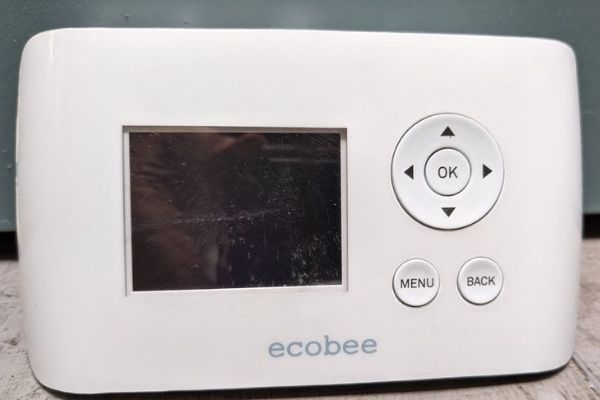
Some RVs have switches in them that allow you to manually switch between AC and heat to prevent both systems from running at the same time. Other RVs have safety switches that prevent furnace operation under certain conditions. If your RV is so equipped, make sure the switch is in the furnace on position.
RV Furnace Is On, But There Is No Air Comes Out Of The Vents?
When operating normally, many furnaces will run a short time to heat up before the interior circulation fan turns on. This is the fan that blows the hot air into the RV. If your furnace runs and the circulation fan never turns on then you likely have a bad fan/fan motor or an issue in the electronics which is preventing the fan from turning on.
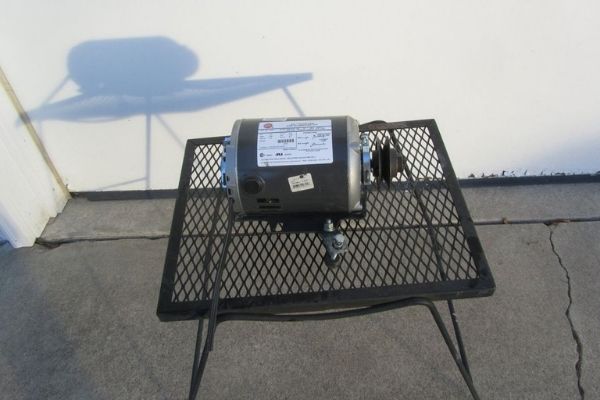
If the fan is running but you are not getting airflow out of the vents then you likely have a blockage somewhere in your ducting. Check your ducting for blockage. Also, many RVs use corrugated piping to channel air through some parts of the RV like through bathroom cabinets. Check that these pipes are properly attached at both ends as they can sometimes rattle loose while traveling.
RV Furnace Keeps Shutting Off?
Modern RV furnaces have several safety mechanisms which will cause them to shut down if certain conditions are not met. When it shuts off can tell you a lot about the issue that is causing the shutdown. Here are some examples.
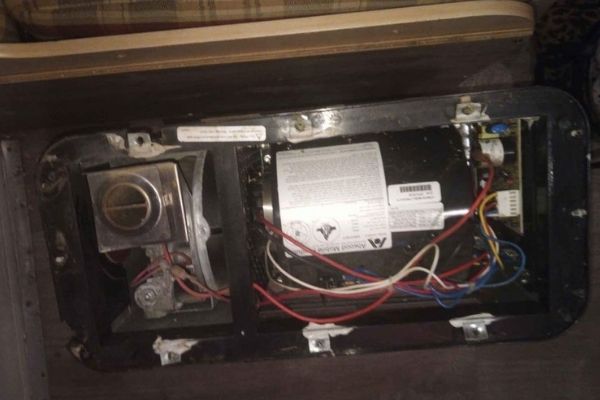
- Furnace shuts down before the pilot ignites. This is most likely caused by a faulty sail switch or bad blower motor. The sail switch is activated when the blower motor generates enough pressure to properly evacuate the combustion chamber to the outside of the RV. If the switch does not activate, the furnace will shut down before the pilot ignites.
- Furnace shuts down after the pilot ignites. There is a sensor which detects the heat of the pilot flame. If that sensor does not detect the flame then the main burner will not turn on and the furnace will shut down. There are several reasons that pilot light would not be detected by the sensor. If your furnace has not been run in a long time then corrosion or dirt build up on the sensor can prevent it from working correctly. You can try cleaning or replacing the sensor. Gas flow issues can cause a weak or abnormal pilot flame which the sensor can miss. Gas flow issues can include problems with your propane regulator, leaks in your lines, running too many gas appliances at the same time as your furnace. Even excessively cold temperatures can lower your gas flow enough to cause furnace operation issues.
- Furnace shuts down after main burner turns on. This is most likely an issue with the control furnace control board.

